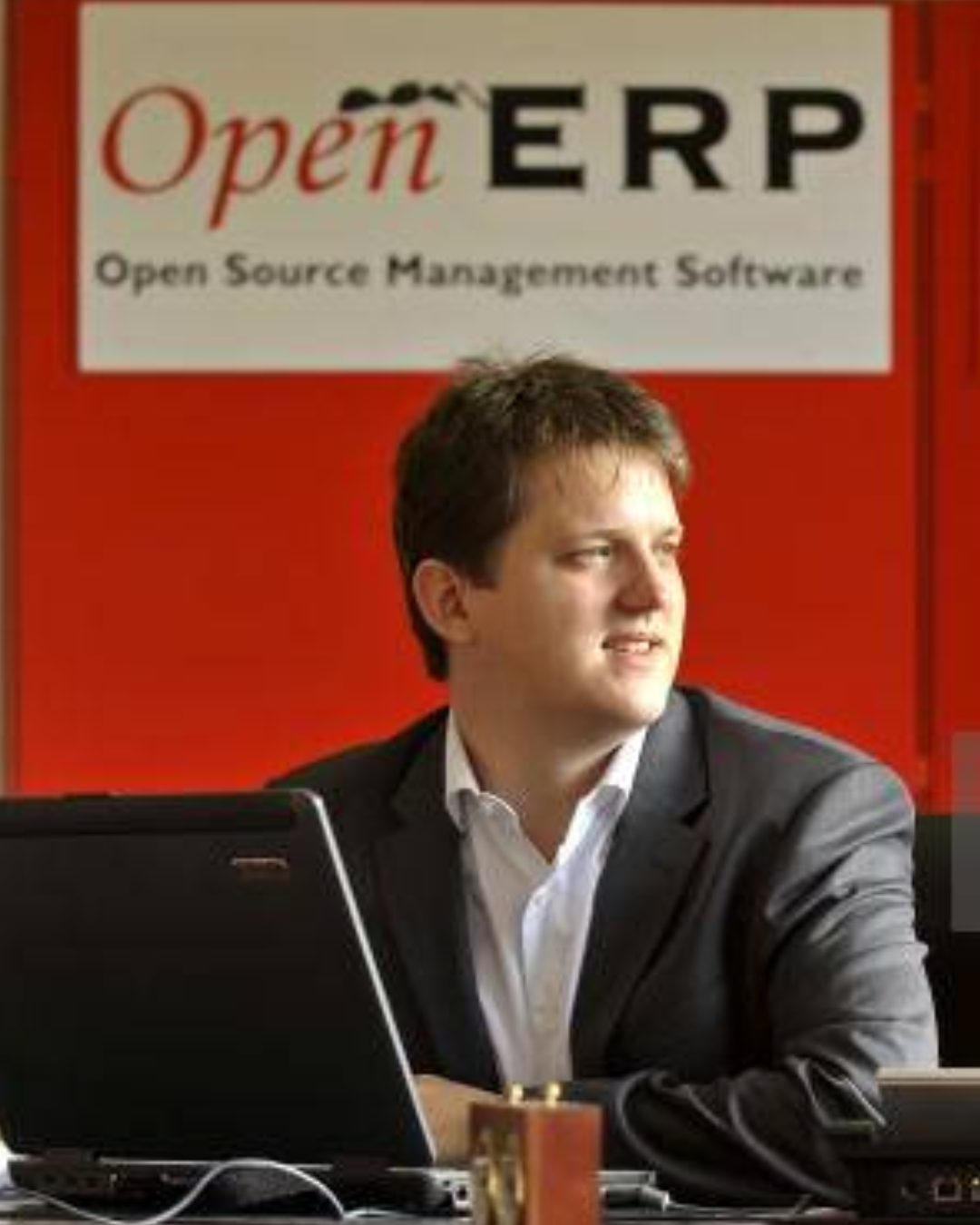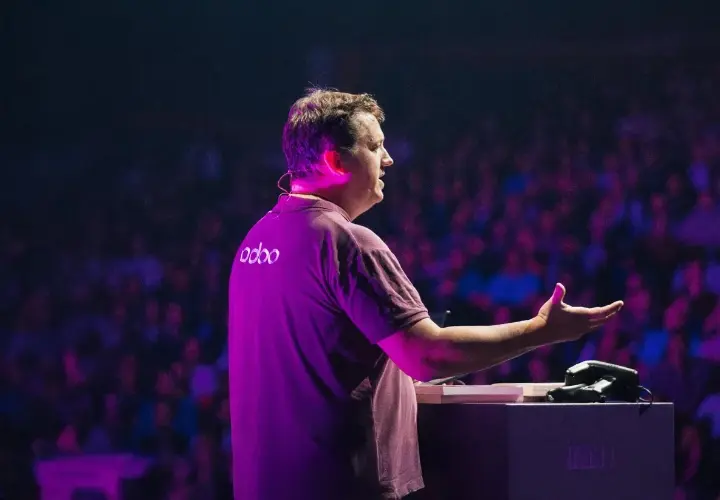Odoo didn’t emerge from Silicon Valley or launch with massive funding.
It started in Belgium as a side project and grew into one of the world’s most popular business software platforms.
What powered that growth? A focus on usability, community-driven development, and a commitment to staying open.
Fabien starts TinyERP and invites a community to build
In 2002, Belgian computer science student Fabien Pinckaers launched TinyERP as a side project. It was a simple idea with big implications: make business software that was flexible, affordable, and open.
By 2005, TinyERP had grown into OpenERP.
A growing community of developers joined in, drawn by the open-source model and the chance to shape a full-suite ERP system. Unlike most software at the time, OpenERP invited real co-creation, not just customisation. That openness became part of the product’s DNA and of everything that would follow.

Fabien Pinckaers at OpenERP’s farmhouse office in Belgium in 2009, the early stage of what would later become Odoo.
Putting the user first
While legacy ERPs focused on enterprise IT departments, OpenERP focused on people. It was one of the first systems to prioritise usability as a core design principle.
This made it ideal for small and mid-sized businesses, who could finally access ERP software without long rollouts or complex setups. At the same time, it remained powerful enough to support global operations through modular design and deep configuration options.
Odoo grows into a global business software platform
2005
TinyERP launches publicly in Belgium
2009
The name changes to OpenERP as developer adoption accelerates
2010
International expansion begins with offices in India and the US
2014
Rebranded as Odoo to reflect the growing ecosystem beyond ERP, including CRM, eCommerce, and Website Builder.
2015 to 2020
A global partner network forms and cloud-based services scale adoption
2021
Odoo reaches unicorn status with a 2.3 billion dollar valuation after major investment
2022 to 2025
Odoo surpasses 5,000 employees and 7,500 partners in over 130 countries
Sorry SAP: Odoo challenges legacy ERPs with speed and flexibility
When Odoo launched the “Sorry SAP” campaign it was a tongue-in-cheek slogan, but it also had a very real message.
Odoo positioned itself as a modern alternative to legacy ERPs, systems that are often known for complexity, high costs, and slow rollouts.

Odoo used cheeky billboards to position itself as a mould breaker in the ERP market.
With fast rollout times, modular pricing, and a focus on real usability, it appealed to both startups and global organisations. The architecture allowed businesses to start small and expand as they grew. And behind it all stood a thriving community of developers and partners constantly improving the platform.
Odoo continues to scale with community and innovation
As of 2025, Odoo shows no signs of slowing down.
Fabien Pinckaers still leads the company, now with offices across five continents and a growing footprint in the US and Asia. His mission remains the same: to make great business software accessible to everyone, regardless of size or budget.

Fabien Pinckaers at Odoo Experience 2024, unveiling the latest version of Odoo in a live keynote and demo presentation.
The roadmap includes AI-powered features, drag-and-drop customisation, and fully managed cloud hosting through Odoo.sh. It’s built to reduce complexity, not add to it, and to give teams control over how they work. The open-source community continues to be a driving force, shaping features, fixing bugs, and expanding what's possible.
Become a part of the Odoo story
Odoo redefined how business software gets built. But your setup still makes all the difference.
As an Odoo Gold Partner, we help you tailor a system that fits your goals, from the first module to full-scale rollout.